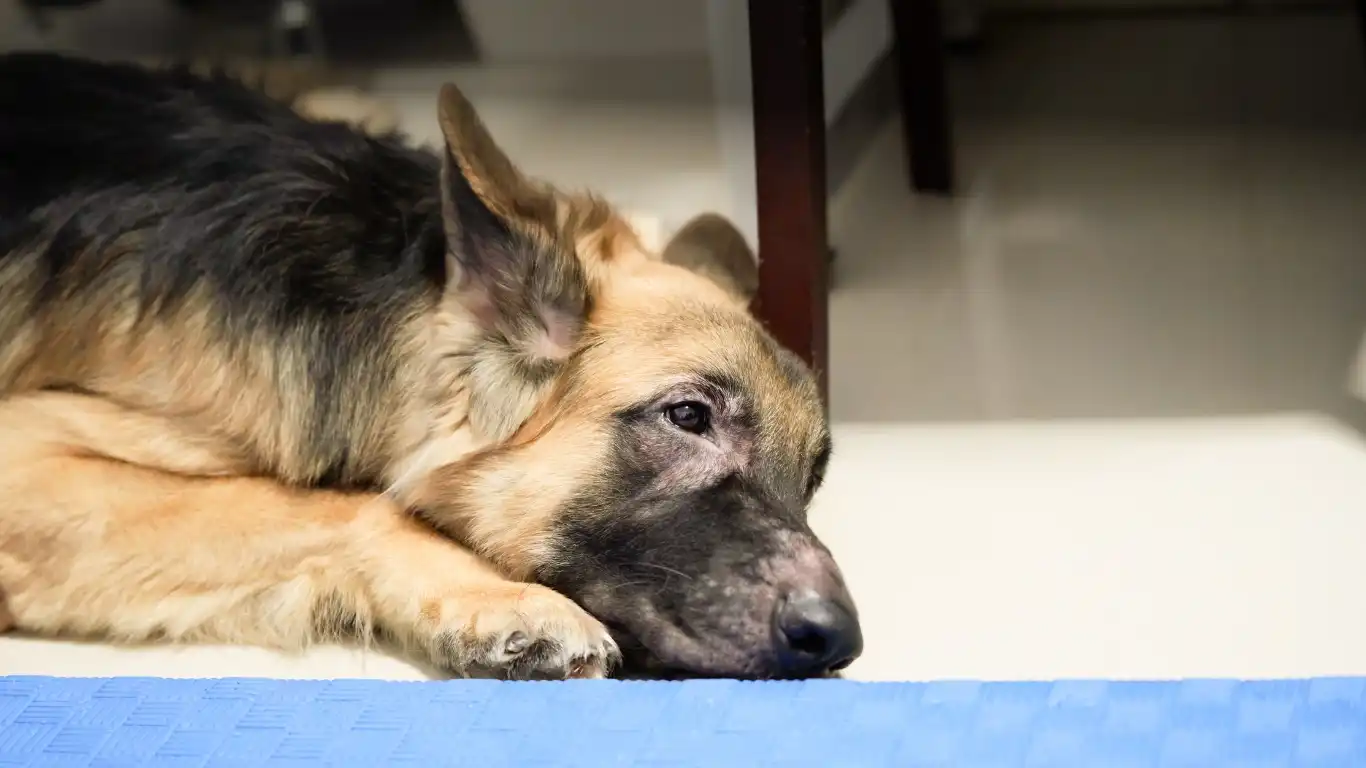Signs of Food Allergies in Dogs: Warning Signs You Shouldn’t Ignore
Have you ever noticed your pup scratching like crazy, licking their paws non-stop, or dealing with tummy troubles that just won’t go away? If so, you might be dealing with one of the most frustrating challenges for pet parents—food allergies in dogs. As a pet nutritionist who’s worked in veterinary clinics, I’ve seen firsthand how food allergies can make life miserable for dogs and their owners. The good news? Once you know what to look for, you can take action and help your furry friend feel better.
What Exactly Are Food Allergies in Dogs?

Before we dive into the signs of food allergies in dogs, let’s clear up a common misconception. Many pet parents confuse food allergies with food intolerances. They’re not the same thing! A food allergy is an immune system response—your dog’s body mistakenly sees a certain food as a threat and overreacts. On the other hand, food intolerance usually means your pup just can’t digest something properly (think lactose intolerance in humans).
Most of the time, true food allergies in dogs are triggered by proteins, like beef, chicken, dairy, or even grains. That’s why identifying and eliminating the culprit is the first step toward relief.
Common Signs of Food Allergies in Dogs

Now, let’s talk about the real reason you’re here—spotting food allergies before they get out of hand. Based on my experience working with countless dog owners in vet clinics, here are the most common symptoms to watch out for:
1. Non-Stop Itching & Skin Issues
One of the biggest red flags? Itchy, irritated skin. If your dog is constantly scratching, biting, or licking their paws, ears, or belly, food allergies might be the culprit. I’ve seen dogs come in with red, inflamed skin that looks downright painful. Sometimes, they even develop rashes or sores from all the scratching.
- Excessive scratching, especially around the face, ears, and paws
- Red, inflamed skin or rashes
- Chronic ear infections
2. Paw Licking & Chewing
If your pup is obsessively licking their paws, don’t ignore it! In my years of working in pet nutrition, I’ve learned that dogs often do this to soothe itchy skin. But it can also lead to secondary infections—nobody wants stinky, swollen paws!
3. Chronic Ear Infections
Ever noticed a bad smell coming from your dog’s ears? Or maybe they’re shaking their head like crazy? Recurring ear infections can be another sneaky sign of food allergies. I’ve had pet parents tell me they’ve treated ear infections over and over, only to realize later that food was the real issue.
4. Digestive Problems
While skin problems are more common, some dogs with food allergies experience tummy troubles. I’ve seen pups struggle with:
If your dog’s digestive issues don’t seem to go away, it’s worth looking into their diet.
Why Food Allergies Can Be Hard to Detect

Here’s the tricky part—food allergies can develop at any time. Your dog could be eating the same food for years and suddenly start having issues. This often surprises pet parents I work with because they assume allergies start in puppyhood.
Another challenge? The symptoms of food allergies often look a lot like other conditions, like environmental allergies or flea bites. That’s why working with your vet is crucial in pinpointing the root cause.
How to Diagnose Food Allergies in Dogs

Alright, so you suspect your dog has a food allergy. Now what? Here’s where things get a little tricky—there’s no simple test that can instantly confirm a food allergy. But don’t worry, I’ve guided plenty of pet parents through this process, and I’ll walk you through it step by step.
1. Rule Out Other Causes First
Before jumping to food allergies, we need to eliminate other possible culprits. Many skin issues in dogs are actually caused by environmental allergies, flea bites, or infections. I always recommend checking for fleas first (even if you don’t see them—some dogs are allergic to flea saliva, and a single bite can set off a reaction!).
2. The Elimination Diet Trial
This is the gold standard for diagnosing food allergies. It takes time and patience, but trust me, it’s worth it.
- Pick a novel protein and carbohydrate: Choose ingredients your dog has never eaten before (like venison and sweet potato or rabbit and peas).
- Stick to it for at least 8-12 weeks: No treats, no table scraps—just the elimination diet.
- Monitor symptoms: If your dog’s itching, ear infections, or digestive issues improve, that’s a sign food was the problem.
- Reintroduce old foods one at a time: This helps identify the exact trigger.
I’ve seen so many pet parents get frustrated with this step, but consistency is key. One sneaky snack can throw off the whole process!
Best Diet Options for Dogs with Food Allergies

Once you’ve identified the allergen, the next step is finding a diet that works for your pup. There are a few different options, and what works best depends on your dog’s specific needs.
1. Limited-Ingredient Diets
These diets contain fewer ingredients, making it easier to avoid allergens. Many high-quality brands now offer limited-ingredient formulas that are free from common triggers like chicken, beef, and grains.
2. Hydrolyzed Protein Diets
This one’s a little more scientific. Hydrolyzed diets break proteins down into tiny pieces that the immune system doesn’t recognize as a threat. These diets are often prescribed by veterinarians and can work wonders for severe allergies.
3. Home-Cooked or Raw Diets
Some pet parents opt for homemade diets to have full control over what their dog eats. If you go this route, I highly recommend working with a vet or pet nutritionist (hey, that’s me!) to ensure your pup is getting all the nutrients they need.
Can Dogs Outgrow Food Allergies?

Here’s something I get asked a lot: “Will my dog grow out of their food allergy?” Unfortunately, the answer is usually no. Once a dog develops an allergy to a certain food, it’s typically a lifelong issue.
However, there’s good news! With the right diet and a little extra care, dogs with food allergies can live happy, itch-free lives. I’ve seen pups go from miserable to thriving just by making a few simple dietary changes.
In the next section, we’ll dive into how to manage food allergies long-term and ensure your dog stays healthy and comfortable. Stay tuned!
Case Studies & Real-Life Examples

Sometimes, the best way to understand food allergies in dogs is to hear real stories. Over the years, I’ve worked with countless pet parents who struggled to find the right diet for their itchy, uncomfortable pups. Here are a few cases that stuck with me:
Case 1: Bella, the French Bulldog with Mystery Allergies
Bella’s owner came to me frustrated—her sweet little Frenchie had chronic ear infections and constant paw licking. After trying different medications with no luck, we started an elimination diet. Within six weeks, the symptoms completely disappeared. The culprit? Chicken, which was in almost every commercial dog food she had tried before!
Case 2: Max, the Lab Who Couldn’t Stop Scratching
Max, a fun-loving Labrador, had been struggling with red, irritated skin for over a year. His owner thought it was seasonal allergies, but when antihistamines didn’t work, we decided to change his diet. A limited-ingredient lamb and rice formula finally did the trick—no more itching, no more vet visits!
Case 3: Rocky, the Senior Dog with Digestive Issues
Rocky, a 10-year-old Golden Retriever, had been dealing with diarrhea and bloating for months. After running tests to rule out serious conditions, we switched him to a hydrolyzed protein diet. Within two weeks, his digestive issues were gone, and he had more energy than he had in years.
Key Takeaways: What You Need to Remember

- Food allergies in dogs are more common than most people think, and they often go undiagnosed for years.
- Symptoms can vary—from itchy skin and ear infections to digestive problems.
- The best way to diagnose a food allergy is through an elimination diet, which takes time but is the most reliable method.
- There are several dietary options for dogs with food allergies, including limited-ingredient diets, hydrolyzed protein diets, and homemade meals.
- Managing food allergies is a lifelong commitment, but with the right diet, your dog can live a happy, healthy life.
FAQs
1. How long does it take for food allergy symptoms to go away after switching diets?
It depends on the dog, but most see improvements within 4-8 weeks. Some symptoms, like ear infections, may take a little longer to fully clear up.
2. Can I test my dog for food allergies at the vet?
While there are blood tests available, they’re not always accurate. The elimination diet is still the best way to diagnose food allergies.
3. Are grain-free diets good for dogs with food allergies?
Not necessarily. Many dogs are allergic to proteins like chicken or beef rather than grains. It’s best to identify the specific allergen rather than assuming grain-free is the solution.
4. What treats can I give my dog if they have food allergies?
Stick to treats made from ingredients that are safe for your dog’s diet. If you’re unsure, homemade treats using limited ingredients (like dehydrated sweet potatoes or single-protein treats) are a great option.
5. Can food allergies develop later in life?
Yes! Dogs can develop allergies to foods they’ve been eating for years, which can make diagnosing the issue tricky.
Bonus: Additional Resources & DIY Tips
If you’re navigating food allergies in your dog, here are a few extra resources to help:
- DIY Hypoallergenic Dog Treat Recipe: Try making simple treats at home using novel proteins like venison or duck.
- Tracking Symptoms: Keep a food journal to monitor your dog’s reactions to different foods.
- Join Support Groups: Online pet nutrition forums can be a great place to share experiences and get advice.
Appendix: References & Call to Action
For more information, check out these reliable sources:
Disclaimer: This article is for informational purposes only and is not a substitute for professional veterinary advice. Always consult with your vet before making dietary changes for your dog.
Did this guide help you? If so, share it with fellow dog parents! And if you have any questions, drop them in the comments below—I’d love to hear from you!






